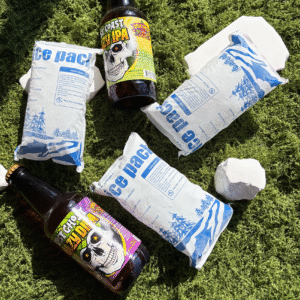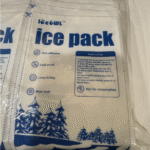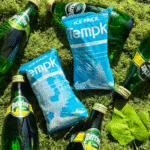In today’s global supply chains, cold chain temperature monitoring is essential for ensuring the safety and effectiveness of temperature-sensitive products such as food, Farmasi, dan vaksin. This article explores the critical role of temperature monitoring in cold chains, the latest technologies, and emerging trends that will shape the industry in 2025 dan seterusnya. By optimizing your cold chain operations, you can enhance product safety, Kurangi limbah, and ensure compliance with industry standards.
-
What is cold chain temperature monitoring, and why is it crucial for product safety?
-
How do modern temperature monitoring systems work in cold chain logistics?
-
What are the best practices for cold chain temperature monitoring in 2025?
-
How can businesses ensure compliance with regulatory standards using these systems?
What is Cold Chain Temperature Monitoring, dan Mengapa Itu Penting?
Cold chain temperature monitoring refers to the continuous tracking and control of temperature-sensitive products throughout the supply chain, from storage to transport. This monitoring is essential because temperature deviations, even for brief periods, can cause significant product degradation, including loss of efficacy in pharmaceuticals or spoilage in food. Adhering to precise temperature ranges ensures product safety, Kepatuhan Pengaturan, and consumer satisfaction.
Misalnya, vaccines must be maintained within a strict temperature range to remain effective, while fresh produce and frozen foods require optimal storage conditions to prevent quality loss.
How Do Temperature Monitoring Systems Work in Cold Chain Logistics?
Modern temperature monitoring systems are designed to provide real-time data about the temperature of goods as they move through the supply chain. These systems can track various parameters, seperti:
-
Suhu: Ensuring products stay within the required temperature range.
-
Kelembaban: Monitoring moisture levels that could affect product integrity.
-
Lokasi: Tracking shipments’ geographic position to optimize routes.
Real-time temperature monitoring involves using sensor Dan Perangkat IoT that track the temperature continuously across different stages of the supply chain, from warehouses to vehicles. When the temperature deviates from the set range, alarms are triggered, enabling immediate intervention to prevent product damage.
Best Practices for Cold Chain Temperature Monitoring in 2025
Di dalam 2025, optimizing cold chain logistics for temperature control requires leveraging the latest technologies and strategies. Below are some of the best practices to follow:
Leverage IoT Sensors for Real-Time Monitoring
IoT sensors are revolutionizing cold chain logistics by providing continuous, real-time temperature data. Ini kecil, cost-effective devices can be attached to containers, paket, or vehicles to monitor temperature and other environmental factors.
Key Benefits of IoT Temperature Monitoring:
-
Real-time data and alerts for proactive action.
-
Improved visibility across the entire supply chain.
-
Enhanced compliance with regulatory standards.
By integrating IoT devices with cloud-based platforms, businesses gain continuous insights into their cold chain operations and ensure greater product safety.
Blockchain untuk transparansi dan keamanan
Blockchain technology offers a secure and transparent way to track products through the supply chain. It ensures that temperature data remains immutable and verifiable, which is essential for regulatory compliance.
Blockchain Benefits:
-
End-to-end visibility: All stakeholders can verify the temperature history of products.
-
Tamper-proof data: Ensures the integrity of temperature records, reducing the risk of errors or fraud.
This technology is especially useful for complying with strict industry regulations, such as the FDA standards for pharmaceuticals.
Utilize Predictive Analytics for Risk Management
Data-driven predictive analytics help businesses identify potential risks before they happen by analyzing historical temperature data, weather conditions, and traffic patterns.
Benefits of Predictive Analytics:
-
Improved risk mitigation through actionable insights.
-
Optimized transportation routes to minimize temperature fluctuations and transit time.
-
Cost reduction by minimizing spoilage and improving supply chain efficiency.
By using predictive analytics, businesses can not only respond to potential problems but also optimize their operations to prevent them.
Technologies Transforming Cold Chain Temperature Monitoring in 2025
The cold chain logistics industry is embracing cutting-edge technologies to ensure the safety of temperature-sensitive products. Here are some of the most impactful innovations:
Solusi Pengemasan Cerdas
Smart packaging integrates sensors into the product packaging, allowing for continuous monitoring of temperature conditions throughout the shipping process.
-
Bahan perubahan fase (PCMS): These materials absorb or release heat to maintain a consistent temperature.
-
Temperature Indicator Labels: These labels change color to show whether the product has been exposed to temperatures outside the acceptable range.
Cloud-Based Temperature Monitoring Systems
Cloud technology is central to modern temperature monitoring systems, enabling businesses to store large volumes of data and analyze it in real-time. This allows for better decision-making and enhanced operational efficiency.
Manfaat utama:
-
Remote access: Data can be accessed from anywhere, enabling continuous monitoring.
-
Data sharing: Cloud systems facilitate easy data sharing between stakeholders, including regulatory bodies, untuk memastikan kepatuhan.
Compliance with Cold Chain Temperature Monitoring Standards
Ensuring compliance with industry regulations is crucial in cold chain logistics. Below are some key regulations and guidelines that businesses must follow:
FDA Regulations for Pharmaceutical Cold Chains
The FDA mandates strict temperature control for the transport and storage of pharmaceuticals, ensuring that these products remain safe and effective. Compliance involves:
-
Maintaining required temperatures for the entire supply chain.
-
Documenting temperature logs to prove adherence to regulatory standards.
-
Pemantauan berkelanjutan to prevent exposure to temperature variations.
HACCP Guidelines for Food Products
The Hazard Analysis and Critical Control Points (Haccp) system ensures that food products are safely transported and stored within the required temperature range.
HACCP Guidelines:
-
Regular temperature checks selama transportasi dan penyimpanan.
-
Proper documentation of temperature logs to demonstrate compliance.
Common Questions About Cold Chain Temperature Monitoring
What is cold chain temperature monitoring?
Cold chain temperature monitoring involves tracking and maintaining the temperature of sensitive goods during storage and transit to ensure their safety and quality.
How does IoT technology improve cold chain temperature monitoring?
IoT technology allows businesses to monitor temperature in real-time, offering continuous tracking, automatic alerts, and remote access, ensuring that any temperature deviations are immediately detected.
Conclusion and Actionable Recommendations
Cold chain temperature monitoring is more critical than ever in 2025, with technological advancements providing greater control, ketepatan, dan kepatuhan. By adopting Sensor IoT, blockchain, predictive analytics, Dan Kemasan Cerdas, businesses can optimize their cold chain operations, ensuring product safety and regulatory compliance.
Langkah Tindakan:
-
Implement IoT Monitoring: Invest in IoT sensors for real-time monitoring.
-
Adopt Blockchain: Enhance transparency and traceability with blockchain technology.
-
Optimize Using Predictive Analytics: Leverage data to forecast risks and optimize operations.
For a personalized consultation on optimizing your cold chain monitoring systems, hubungi kami hari ini untuk konsultasi gratis.
Tentang tempk
Dan Tempk, we specialize in providing state-of-the-art cold chain solutions designed to maintain the integrity and safety of temperature-sensitive products. Our cutting-edge monitoring systems and consulting services help businesses stay compliant with industry regulations while reducing costs and improving efficiency.
Langkah selanjutnya: Contact us today to learn how we can help optimize your cold chain logistics with our advanced temperature monitoring solutions.
























